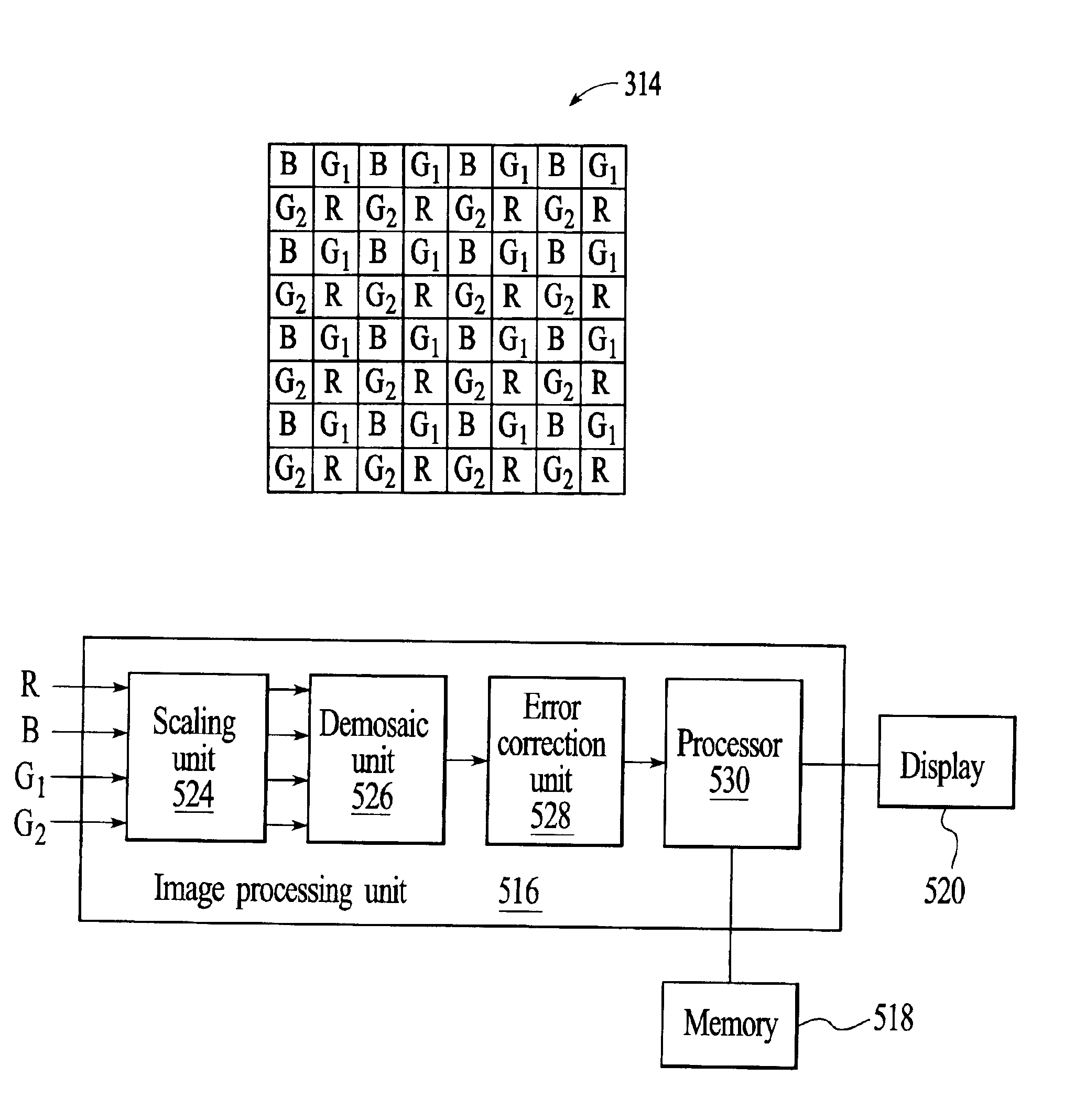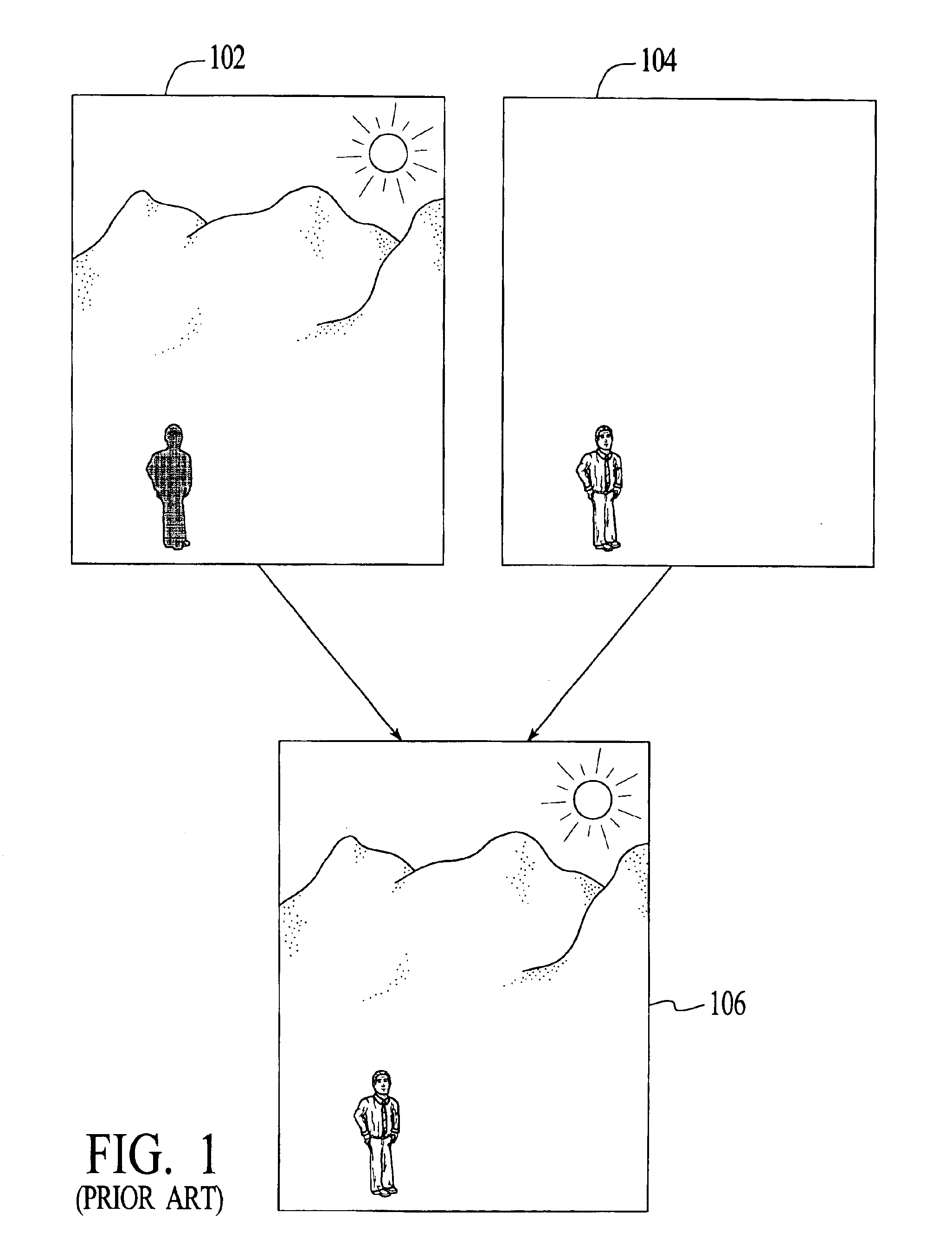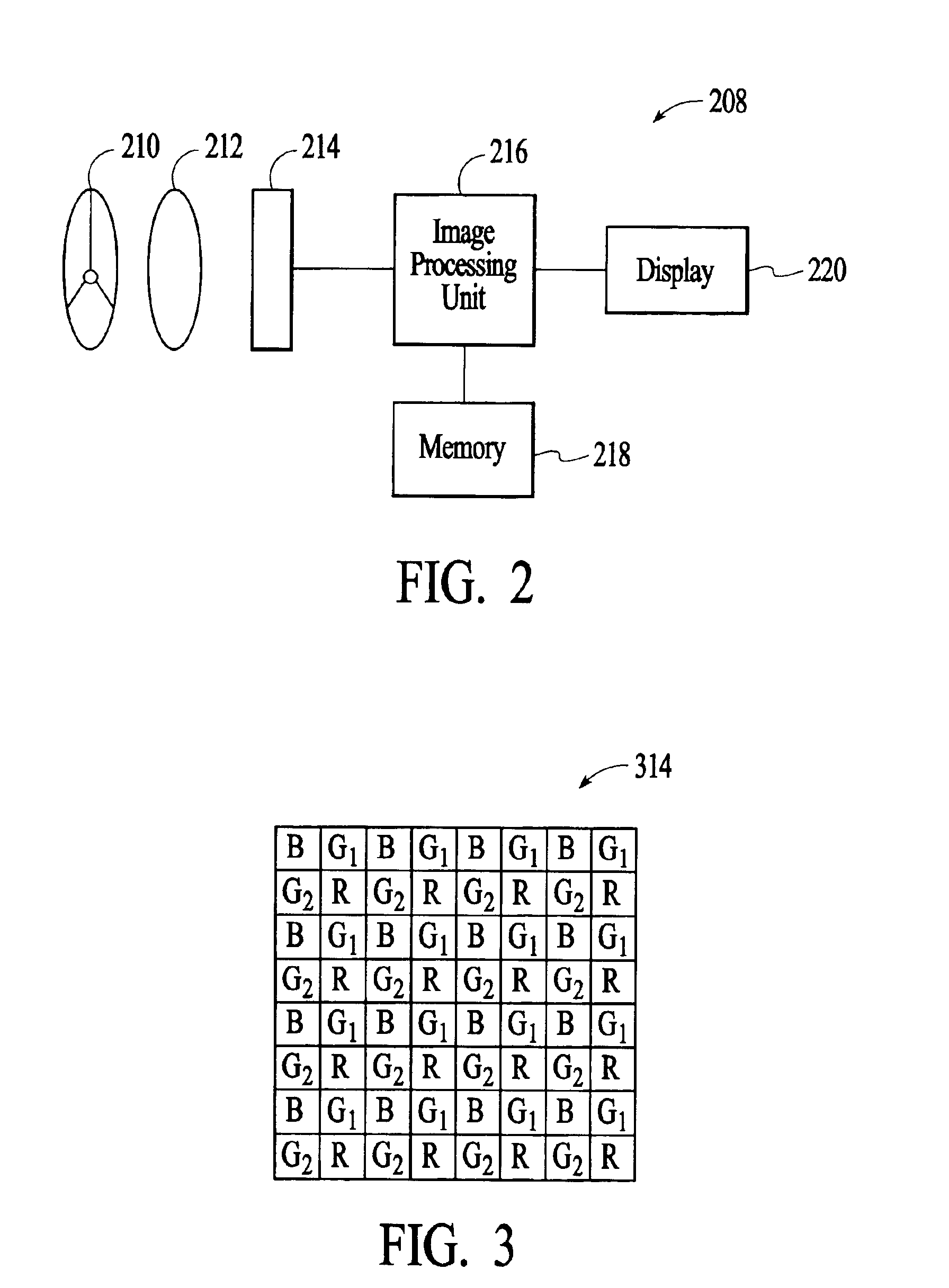System and method for capturing color images that extends the dynamic range of an image sensor using first and second groups of pixels
- Summary
- Abstract
- Description
- Claims
- Application Information
AI Technical Summary
Benefits of technology
Problems solved by technology
Method used
Image
Examples
Embodiment Construction
[0021]FIG. 2 depicts a digital imaging system 208 that is used to capture color digital images. The digital imaging system includes a shutter 210, imaging optics 212, an image sensor 214, an image processing unit 216, memory 218, and a display 220. In an embodiment, the digital imaging system is a hand-held digital camera that is used to capture still digital images. In another embodiment, the digital imaging system is a digital video camera that is used to capture digital video.
[0022]The shutter 210 and imaging optics 212 are conventional devices that are well known in digital imaging systems. Likewise, the memory 218 and display 220 are conventional devices that are well known in digital imaging systems. In an embodiment, the shutter, imaging optics, memory, and display are integrated with the image sensor 214 and the image processing unit 216 into a digital camera. The image sensor and image processing unit are the focus of the invention and are described in more detail below.
[00...
PUM
 Login to View More
Login to View More Abstract
Description
Claims
Application Information
 Login to View More
Login to View More - R&D
- Intellectual Property
- Life Sciences
- Materials
- Tech Scout
- Unparalleled Data Quality
- Higher Quality Content
- 60% Fewer Hallucinations
Browse by: Latest US Patents, China's latest patents, Technical Efficacy Thesaurus, Application Domain, Technology Topic, Popular Technical Reports.
© 2025 PatSnap. All rights reserved.Legal|Privacy policy|Modern Slavery Act Transparency Statement|Sitemap|About US| Contact US: help@patsnap.com



